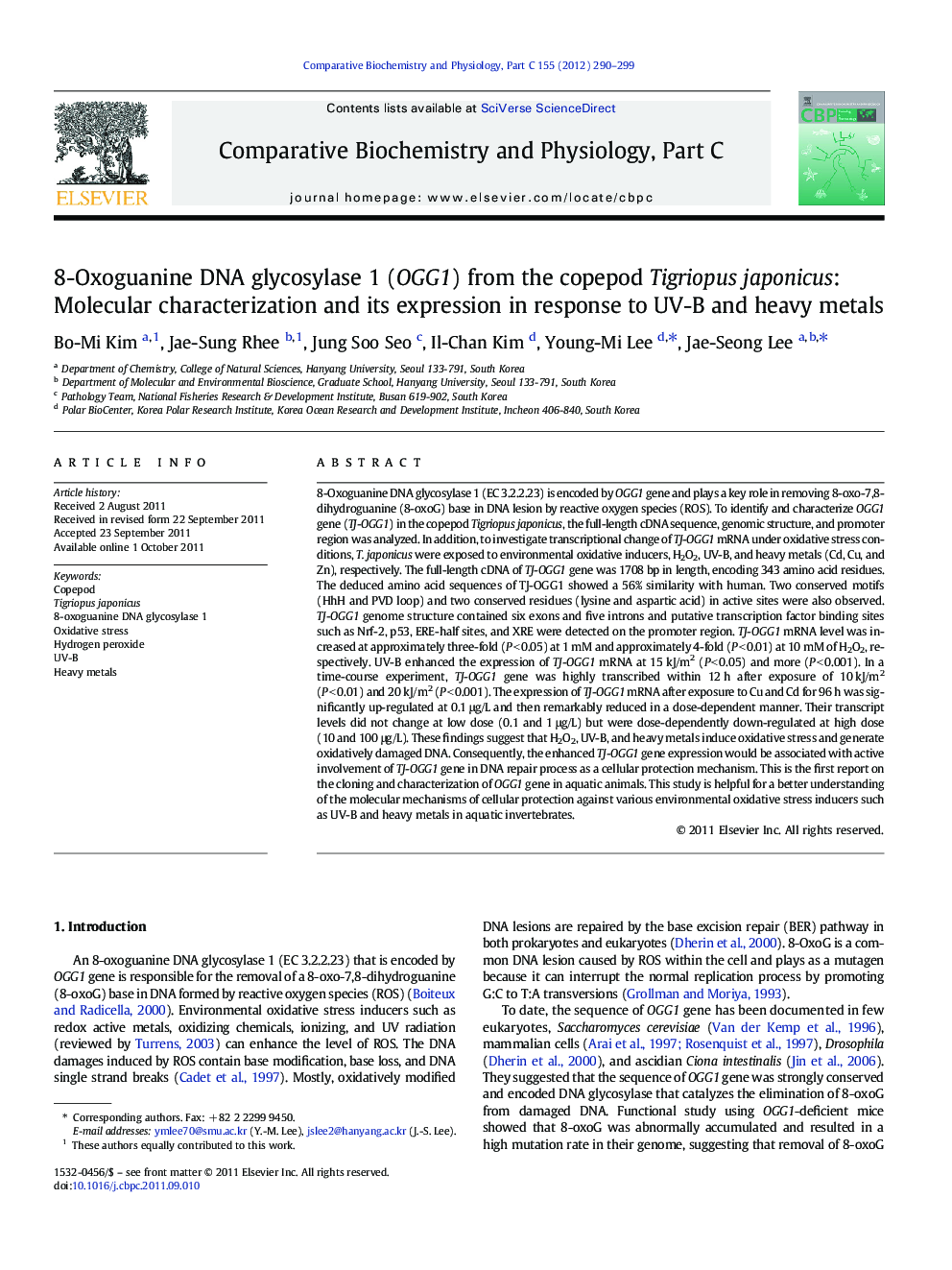| Article ID | Journal | Published Year | Pages | File Type |
|---|---|---|---|---|
| 10821669 | Comparative Biochemistry and Physiology Part C: Toxicology & Pharmacology | 2012 | 10 Pages |
Abstract
8-Oxoguanine DNA glycosylase 1 (EC 3.2.2.23) is encoded by OGG1 gene and plays a key role in removing 8-oxo-7,8-dihydroguanine (8-oxoG) base in DNA lesion by reactive oxygen species (ROS). To identify and characterize OGG1 gene (TJ-OGG1) in the copepod Tigriopus japonicus, the full-length cDNA sequence, genomic structure, and promoter region was analyzed. In addition, to investigate transcriptional change of TJ-OGG1 mRNA under oxidative stress conditions, T. japonicus were exposed to environmental oxidative inducers, H2O2, UV-B, and heavy metals (Cd, Cu, and Zn), respectively. The full-length cDNA of TJ-OGG1 gene was 1708 bp in length, encoding 343 amino acid residues. The deduced amino acid sequences of TJ-OGG1 showed a 56% similarity with human. Two conserved motifs (HhH and PVD loop) and two conserved residues (lysine and aspartic acid) in active sites were also observed. TJ-OGG1 genome structure contained six exons and five introns and putative transcription factor binding sites such as Nrf-2, p53, ERE-half sites, and XRE were detected on the promoter region. TJ-OGG1 mRNA level was increased at approximately three-fold (P < 0.05) at 1 mM and approximately 4-fold (P < 0.01) at 10 mM of H2O2, respectively. UV-B enhanced the expression of TJ-OGG1 mRNA at 15 kJ/m2 (P < 0.05) and more (P < 0.001). In a time-course experiment, TJ-OGG1 gene was highly transcribed within 12 h after exposure of 10 kJ/m2 (P < 0.01) and 20 kJ/m2 (P < 0.001). The expression of TJ-OGG1 mRNA after exposure to Cu and Cd for 96 h was significantly up-regulated at 0.1 μg/L and then remarkably reduced in a dose-dependent manner. Their transcript levels did not change at low dose (0.1 and 1 μg/L) but were dose-dependently down-regulated at high dose (10 and 100 μg/L). These findings suggest that H2O2, UV-B, and heavy metals induce oxidative stress and generate oxidatively damaged DNA. Consequently, the enhanced TJ-OGG1 gene expression would be associated with active involvement of TJ-OGG1 gene in DNA repair process as a cellular protection mechanism. This is the first report on the cloning and characterization of OGG1 gene in aquatic animals. This study is helpful for a better understanding of the molecular mechanisms of cellular protection against various environmental oxidative stress inducers such as UV-B and heavy metals in aquatic invertebrates.
Keywords
Related Topics
Life Sciences
Biochemistry, Genetics and Molecular Biology
Biochemistry
Authors
Bo-Mi Kim, Jae-Sung Rhee, Jung Soo Seo, Il-Chan Kim, Young-Mi Lee, Jae-Seong Lee,
